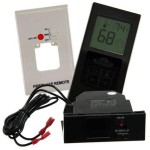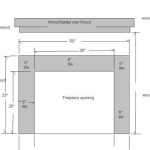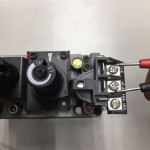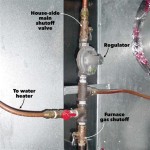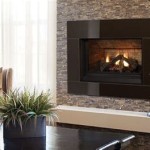Sourcing Old Fireplace Insert Parts: A Comprehensive Guide
Maintaining and repairing an older fireplace insert often necessitates sourcing specific replacement parts. Unlike contemporary models, parts for older inserts may not be readily available from manufacturers or retailers. This necessitates a different approach to locating and acquiring the components required to keep these heating appliances functioning effectively and safely. This article provides a comprehensive guide to navigating the landscape of old fireplace insert parts, outlining various avenues for finding them, factors to consider when evaluating their condition, and best practices for ensuring compatibility.
The challenge in finding parts for older fireplace inserts stems from several factors. Production runs for specific models may have ceased decades ago, leading to depletion of original manufacturer inventory. Furthermore, companies may have been acquired or gone out of business, rendering their existing stock inaccessible. Technological advancements also play a role; newer insert designs often incorporate different materials and mechanisms, making parts incompatible with older models. As a result, individuals seeking replacement parts must often engage in a more extensive search, exploring various resources and potentially relying on reclaimed or refurbished components.
Before initiating the search for specific parts, accurate identification of the fireplace insert is paramount. This includes noting the manufacturer's name, model number, and any relevant serial numbers. This information is typically found on a data plate affixed to the insert, often located within the firebox, behind the ash lip, or on the unit's exterior casing. A clear photograph of the insert can also be helpful in visually identifying the model and its components. Without precise identification, there is a higher risk of acquiring incompatible parts, leading to wasted time and resources.
Once the insert is accurately identified, the next step involves determining the specific parts required. A detailed inspection of the unit is necessary to diagnose the issue and identify the damaged or worn components. Consulting the original owner's manual, if available, can be invaluable in understanding the insert's construction and identifying parts by their designated names or numbers. Exploded diagrams included in the manual can also be immensely helpful in visually locating and identifying the required components. If the manual is unavailable, online resources such as manufacturer websites, fireplace forums, and parts retailers may offer comparable diagrams or parts lists.
After identifying the needed parts, a systematic search can begin. This search should encompass several potential sources, including specialized fireplace retailers, online marketplaces, and salvage yards. The specific approach will depend on the type of part needed, the rarity of the insert model, and the individual's willingness to explore various options.
Key Point 1: Identifying Potential Sources for Old Fireplace Insert Parts
Several avenues exist for locating old fireplace insert parts, each with its own set of advantages and disadvantages.
Specialized Fireplace Retailers: Some retailers specialize in servicing and repairing fireplaces, often carrying a selection of older parts or having access to suppliers who do. These retailers may possess specialized knowledge of older fireplace models and can provide guidance on finding compatible replacements. While their prices may be higher than other sources, specialized retailers often offer expertise and assurance regarding the quality and compatibility of the parts.
Online Marketplaces: Online marketplaces such as eBay and Craigslist can be valuable resources for finding used or new-old-stock fireplace insert parts. These platforms allow individuals to connect with sellers across a broader geographical area, potentially uncovering rare or discontinued components. However, caution is advised when purchasing from online marketplaces, as the condition of the parts may vary, and the seller's expertise may be limited. Before making a purchase, it is crucial to carefully review the seller's feedback, examine the product description and photographs closely, and ask questions about the part's condition and compatibility.
Salvage Yards and Appliance Repair Shops: Salvage yards and appliance repair shops that handle fireplaces occasionally acquire older inserts that are beyond repair. These units can serve as sources of usable parts. While the selection at salvage yards may be unpredictable, they can sometimes offer viable options for finding specific components at a lower cost. Contacting appliance repair shops and inquiring about their inventory of old fireplace inserts can also lead to the discovery of needed parts. The advantage of this approach is the lower cost, but the parts may require cleaning and refurbishment.
Direct Contact with Manufacturers (If Possible): In rare cases, contacting the original manufacturer of the fireplace insert, or a company that acquired their assets, may yield results. Even if the manufacturer no longer stocks the specific parts, they may be able to provide information about alternative replacements or recommend suppliers who carry compatible components. This approach is most likely to be fruitful if the manufacturer is still in business and maintains historical records of their product lines. It is important to note that many original manufacturers have ceased operation or undergone significant changes, making this option less reliable.
Custom Fabrication: If no suitable replacement part can be found, consider the possibility of having the part custom-fabricated. This option is particularly applicable for non-critical components such as decorative trim or simple structural elements. A skilled metalworker or machinist can often create a replica of the original part based on measurements or drawings. While custom fabrication can be more expensive than purchasing a ready-made part, it can provide a solution when no other options are available.
Key Point 2: Evaluating the Condition and Compatibility of Old Parts
Prior to purchasing any old fireplace insert part, it is essential to carefully evaluate its condition and compatibility with the existing unit. This evaluation should encompass a thorough inspection of the part for signs of wear, damage, or corrosion, as well as confirmation that it is the correct fit for the specific fireplace insert model.
Visual Inspection: A thorough visual inspection is crucial for identifying any potential problems with the part. Look for signs of rust, corrosion, cracks, bends, or other forms of damage. Pay particular attention to areas that are subject to high heat or stress, such as welds, seams, and mounting points. If the part shows significant signs of deterioration, it may not be safe or reliable for use. For electrical components, meticulously inspect wiring for fraying, cracking, or damaged insulation. Moreover, verify that all connectors are present and in good working order.
Material Integrity: Assess the material integrity of the part. Components made of cast iron or steel can become brittle over time, particularly if they have been subjected to high temperatures. Tapping the part with a metal object can reveal whether it is sound or if it has internal cracks. For parts made of refractory materials, such as firebrick or ceramic blankets, check for crumbling, chipping, or significant wear. If the material is significantly compromised, the part may not be able to withstand the heat of the firebox and could fail.
Dimensional Accuracy: Ensure that the dimensions of the replacement part match those of the original. Even slight variations in size can prevent the part from fitting properly or functioning correctly. Use measuring tools, such as calipers or tape measures, to verify the critical dimensions, especially for components that are designed to fit tightly or interface with other parts. If possible, compare the replacement part to the original side-by-side to visually confirm that they are the same size and shape.
Compatibility Verification: Verify that the part is compatible with the specific fireplace insert model. Refer to the manufacturer's parts list or cross-reference guides to confirm that the part is designed for use with the unit. If the part is not specifically listed for the model, consult with a qualified fireplace technician to determine whether it is a suitable replacement. Installing an incompatible part can damage the fireplace insert or create a safety hazard.
Functionality Testing: If possible, test the functionality of the part before installing it. For electrical components, use a multimeter to check for continuity and proper voltage. For mechanical components, such as dampers or blowers, ensure that they move freely and smoothly. If the part appears to be malfunctioning or damaged, it is best to return it or seek an alternative replacement.
Key Point 3: Safety Considerations When Working with Old Fireplace Inserts
Working with old fireplace inserts involves inherent safety risks due to the potential for deteriorated components, exposure to ash and soot, and the presence of combustible materials. It is crucial to adhere to safety precautions to minimize the risk of injury or property damage.
Personal Protective Equipment (PPE): Always wear appropriate personal protective equipment (PPE) when working with old fireplace inserts. This includes safety glasses, gloves, and a dust mask or respirator. Safety glasses will protect the eyes from flying debris, while gloves will shield the hands from sharp edges or hazardous materials. A dust mask or respirator will prevent the inhalation of ash, soot, and other airborne particles. Consider wearing protective clothing to prevent skin irritation from contact with fireplace components. Additionally, hearing protection should be considered when using power tools to disassemble parts.
Electrical Safety: When working with electrical components, disconnect the fireplace insert from the power supply before beginning any repairs or maintenance. Use caution when handling electrical wiring and components, and ensure that all connections are properly insulated. If you are not comfortable working with electricity, seek the assistance of a qualified electrician. Replace any damaged or frayed wiring with new wiring of the same gauge and type. Ensure all electrical parts are UL listed.
Combustible Materials: Keep combustible materials away from the fireplace insert during repairs and maintenance. This includes flammable liquids, paper, and wood. Ash and soot can also be combustible under certain conditions, so it is important to keep the work area clean and free of debris. Ensure adequate ventilation to prevent the buildup of flammable vapors. Have a fire extinguisher readily available in case of an accidental fire.
Structural Integrity: Assess the structural integrity of the fireplace insert before beginning any repairs or maintenance. Check for signs of rust, corrosion, or cracking that could compromise the unit's stability. If the fireplace insert is structurally unsound, it may not be safe to operate. Consult with a qualified fireplace technician to determine whether the unit can be repaired or whether it needs to be replaced. Avoid applying excessive force when disassembling or reassembling components, as this could further damage the unit.
Carbon Monoxide (CO) Safety: Install a carbon monoxide (CO) detector in the vicinity of the fireplace insert. Carbon monoxide is a colorless, odorless gas that can be produced by improperly functioning fireplaces. Exposure to CO can be fatal. Test the CO detector regularly to ensure that it is working properly. Have the fireplace insert inspected by a qualified technician annually to ensure that it is venting properly and that there are no CO leaks.
Proper sourcing of replacement parts is essential for maintaining the functionality and safety of older fireplace inserts. Utilizing the resources and guidelines outlined will increase the likelihood of finding the necessary components and ensuring a successful repair.

Osburnwoodstoves Com Every Part For The Osburn 1600 Insert Select From

Osburnwoodstoves Com Every Part For The Osburn 2000 Insert Select From

Osburnwoodstoves Com Every Part For The Osburn 2000 Insert Select From

Osburnwoodstoves Com Every Part For The Osburn 1100 Insert Select From

Osburn Horizon Wood Fireplace Parts

Osburn 2400 Parts

Osburn 2200 Wood Stove Old Model Parts

Ewf30 Wfe05h0 The Cozy Cabin Stove Fireplace Parts

Osburn 2400 Wood Stove Parts Diagram Older Version

A Plus Inc Superior B500 Replacement Parts Accessories
Related Posts


